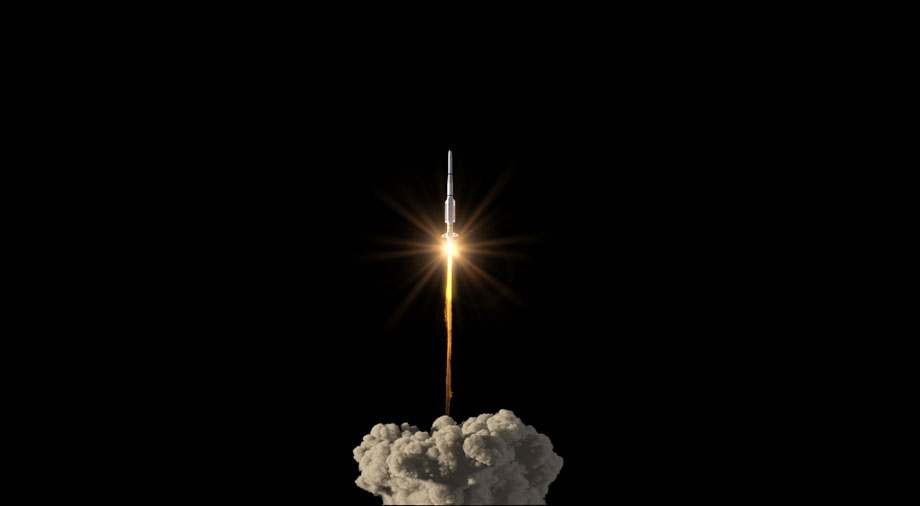2022 was a record year for space launches, with 180 successful orbital missions carried out. This was 32% more than in 2021 (135 launches).
Against the backdrop of a global increase in the number of orbital launches throughout 2022, Europe showed a steady decline in its launches. Space missions conducted by the European Space Agency (ESA) in 2022 were a mere one third of their 2021 totals, with only five successful launches taking place before the end of the year. This regression stems from the difficult but necessary measure of ending cooperation with Roskosmos, the Russian space agency, and completely abandoning the use of Russian rockets and spaceports to launch European space missions in reaction to Russia’s launch of its full-scale aggression against Ukraine.
However, where others saw failure, a number of players saw opportunity. Wanting to regain their former positions, the national space agencies of Europe and private aerospace companies began to work on strengthening Europe’s staying power orbit and creating their own infrastructure for space launches – new spaceports.
Vertical launches and the benefits of proximity to the pole
At the end of 2022, there were 35 commissioned spaceports in the world with licenses to conduct space missions. The United States continues to lead in terms of the number of launch sites for orbital and suborbital launches with nearly 20.
Most of these spaceports are used for vertical rocket launches, which is the classic way to deliver a payload into orbit. A rocket is placed on the launch pad perpendicular to the Earth. The jet thrust created by the propulsion engines of the rocket pushes it up, allowing it to overcome the force of gravity and carry its cargo into orbit.
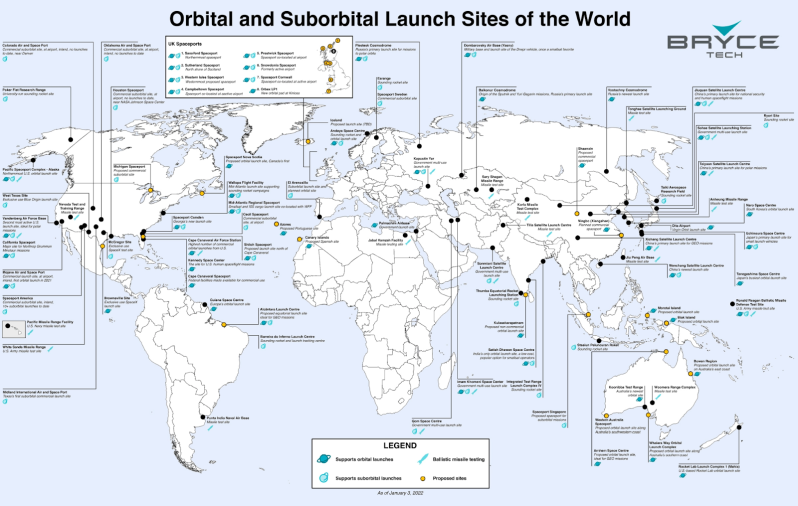
Spaceport map from BryceTech showing spaceports active in 2022 along with projects in development
Until recently, continental Europe had very little capacity to launch its own space missions, as spaceports on its territory could be counted on a single hand. However, the break with Roskosmos has served as a wake-up call to many ESA officials, underscoring how important it is to have well-developed, independent infrastructure for space launches.
Sweden has begun to play an active role in the development of new sites, with their National Space Agency (SNSA) opening its first cosmodrome, the Esrange Space Centre, on January 13, 2023. The cosmodrome’s far northern latitude makes it an ideal place for launching small satellites and cubesats into standardized polar orbits.
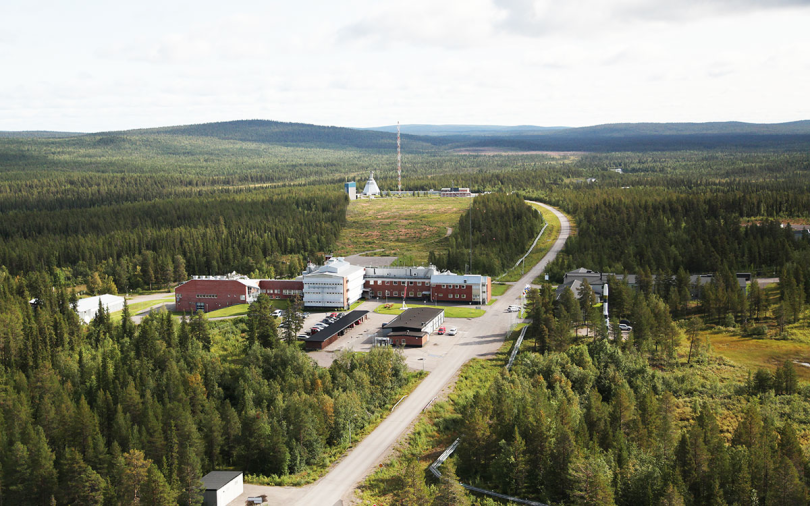
In 2020, the Rocket Factory Augsburg, a German rocket-building start-up which is planning the first launch of its three-stage launch vehicle RFA ONE in July 2023, acquired its own test site on the territory of the then-under-construction Swedish spaceport.
RFA ONE rocket engines operate on the innovative technology of a stepped fuel combustion cycle, in which the efficiency of the rocket engine is enhanced by redirecting unburned fuel from the first combustion chamber to the main one for further use in the engines of subsequent stages. It is wrong to call the launch of the RFA ONE startup exclusively German – like many other European space startups, it combines different components, mainly of European production. Thus, the company uses a turbopump for the engine from the leading rocket-building company of Ukraine, the Dnipro-based Pivdenmash.
The Esrange Space Center is the first large-scale platform for vertical launches of European satellite missions to be opened in continental Europe. Before its appearance, the vast majority of European space missions launched from a spaceport in French Guiana in South America. Esrange is one of the first first alternative solutions to emerge, in particular for launching satellite missions.
Sweden’s neighbor, Norway, is also intensively working on the creation of a European infrastructure for rocket launches. Today, the Andøya Space Center, where the first European orbital launches were carried out in the early 1960s, is being modernized. The Andøya Space complex will be equipped with a host of instruments for carrying out scientific activities in the study of space, the atmosphere, and meteorological monitoring.
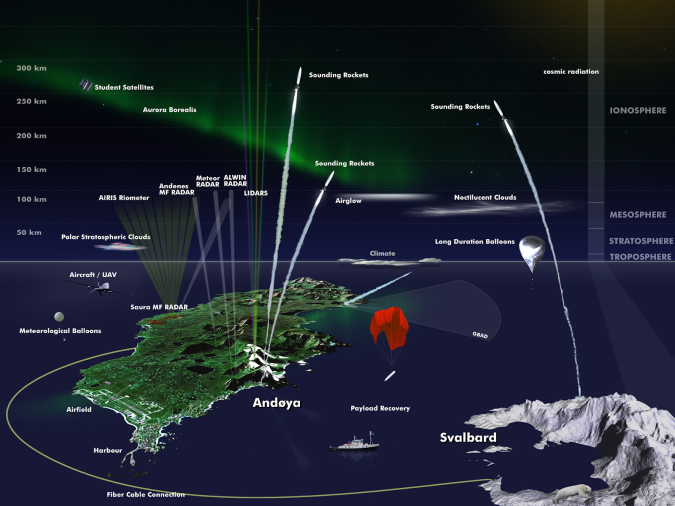
There are also plans for the construction of polar vertical take-off spaceports coming from Great Britain. The cosmodrome in Cornwall, along perhaps with the SaxaVord cosmodrome in Scotland’s Shetland Islands, may emerge as candidates for licenses to conduct space launches.
SaxaVord may prove to be the launch point for the next mission from Virgin Orbit, which could be the first ever successful space launch from the UK. This honor was supposed to be bestowed upon the Cornwall spaceport, which was the first to receive its license for space launches. However, on January 9, 2023, during what was supposed to be the inaugural launch of Virgin Orbit’s LauncherOne rocket, problems with the second stage of the rocket caused the mission to fail, spoiling the potentially history-making event.
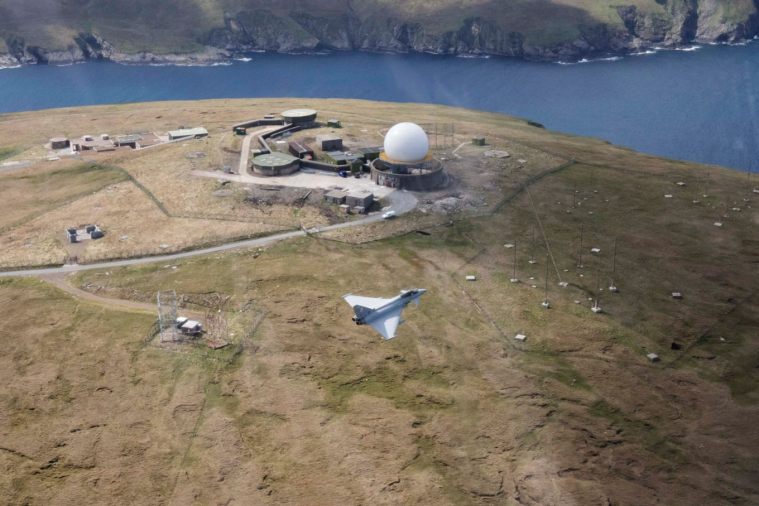
We can already observe how a number of Nordic ESA countries have seen a potentially promising opportunity to exploit the advantages of the high latitude of their northernmost territories. Proximity to the North Pole also plays a key role in launching ballistic missiles that can be used by Europe for military purposes. In light of the war unleashed by Russia, Europe simply can no longer afford not to invest in the development of its own anti-missile systems to provide protection against Moscow’s missiles.
Yesterday’s airports conquer orbit
Vertical rocket launches have many advantages when sending up large volumes of payloads, especially into orbits above Low Earth Orbit (LEO). This is the priority means of launching planetary space missions, large consignments to orbital stations, numerous satellite constellations, as well as technically complex research space stations into orbits very far from the Earth’s surface.
However, the satellites that provide us with the vast majority of telecommunications and Internet of Things services are deployed in much lower orbits. Today, entire constellations of light small-sized cubesats also fly in low Earth orbit to carry out spectral monitoring and optical observation of the Earth.
Where the mass of the payload and the low altitude threshold allow it, companies resort to horizontal launches, when the rocket is launched not from the Earth, but from onboard a specialized aircraft modified for space launches. A striking example here is the Boeing 747 Cosmic Girl, modified by the technical team of Virgin Orbit to carry out launches for their LauncherOne rocket.
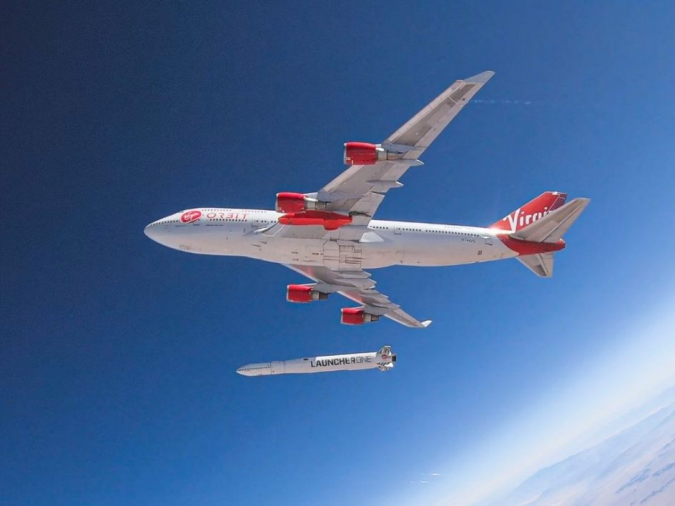
Most spaceports designed for horizontal launch today are modified runways from yesterday’s airports. These facilities can not only launch aircraft, but also allow suborbital and space vehicles to take off and land.
In the history of astronautics, there have also been hybrid variants of space launches, in which a spacecraft was launched on a rocket from the Earth, and then landed on a runway at a specially equipped airport. This was how NASA operated its Space Shuttles, which began carrying out America’s manned space missions in the 1980s. The shuttle, which was launched into orbit by means of vertical take-off using two launch vehicles, was able to maneuver in orbit, dock with the ISS, and after the end of its mission, descend from orbit, and execute an automated horizontal landing on a runway, like an airplane.
A more modern example of this type of aircraft is the unmanned X-37B spacecraft manufactured by Boeing, whose main purpose is still classified. After reaching orbit with a booster rocket, the X-37B is able to continue flying in orbit for a very long period of time, which can be measured in years.
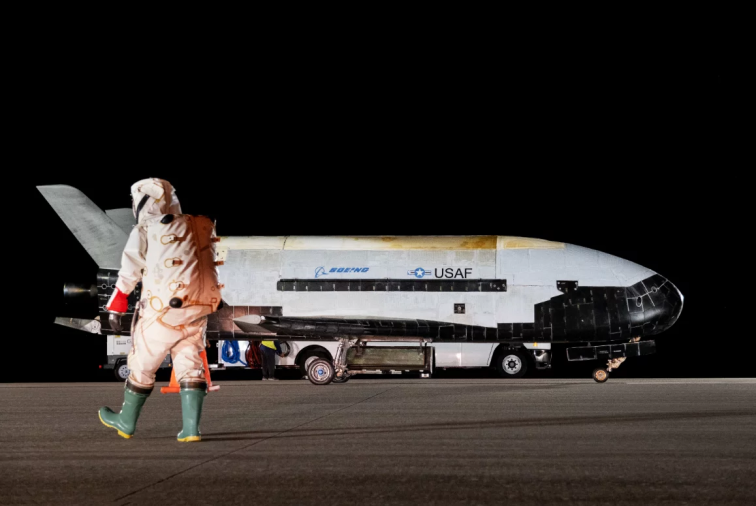
Credit: Adam Shanks/United States Space Force
The London company Astraius, which wants to fill the niche of being the main European provider of horizontal space launches, signed a contract in 2021 with the Prestwick International Aerospace Park in Scotland. The company is expected to carry out its first mission to put a payload into orbit in the spring of 2024, using an American C-17 Globemaster military transport aircraft and Astraius’s own launch vehicle capable of delivering a payload of up to 800 kg into LEO.
Horizontal takeoff opens up a lot of opportunities, because using aircraft to carry out space launches spares companies from having to invest in specialized infrastructure that is by no means cheap. But sometimes, it is only through these kinds of expensive infrastructure projects that it is possible to make real breakthroughs in the space industry.
Spaceport America: what lessons can Europe learn?
The driving force behind today’s breakthroughs in space is the commercial space sector. Its influence is especially noticeable in the US, where private aerospace companies account for the lion’s share of all space launches. To meet launch needs for private aerospace companies in the United States, a full launch complex called Spaceport America was built in the state of New Mexico and officially opened in 2019.
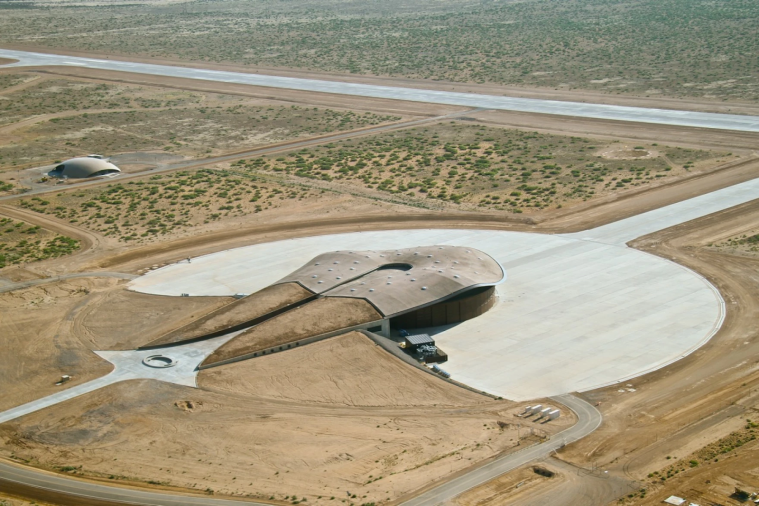
In 2021, following the successful launch of Virgin Galactic’s VSS Unity suborbital mission, the spaceport became America’s third launch pad with the capacity to deliver people into orbit. Today, the spaceport’s launch pads are host to companies such as Virgin Galactic, SpinLaunch, UP Aerospace, and HAPSMobile Aerovironment, as well as a number of other space companies that have used its launch pads in one way or another.
Unlike most spaceports in the world, Spaceport America is not a converted airport, as its launch pads, runway, rocket assembly hangars, and mission control center were built from scratch. Spaceport America is the world’s first spaceport exclusively for private aerospace companies.
The spaceport not only provides platforms for vertical and horizontal launches, but is also playing host to the testing of new methods for orbital launch. Thus, at the end of 2022, the Californian space startup SpinLaunch conducted the tenth successful test launch of its innovative space centrifuge rocket launch system.
The technology involves placing a payload in a vacuum acceleration chamber located in the inner compartment of a huge, 33-meter diameter centrifuge. The rotating mechanism inside the centrifuge is capable of accelerating the orbital payload (or the rocket booster on which it is placed) to hypersonic speeds with colossal forces of 10,000 Gs, after which it is launched through the launch tube, hurtling the payload into orbit.
SpinLaunch’s orbital launch delivery method is expected to help to significantly reduce the cost of space launches, primarily due to the reduction in the use of rocket fuel at the initial stages of the rocket’s acceleration, when its consumption is especially high. Along with using far less fuel, the SpinLaunch launch method will release far fewer emissions, making it far more environmentally friendly.
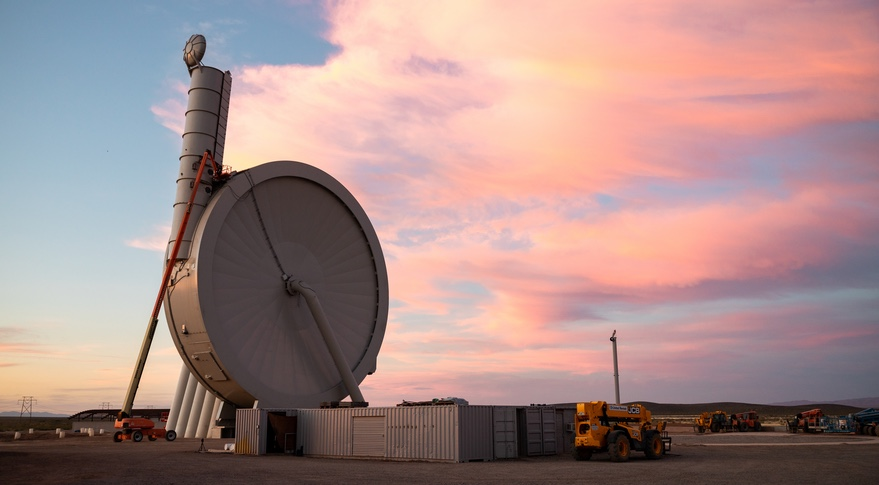
Source:SpinLaunch
The development and operation of Spaceport America clearly demonstrates that financing of specialized sites specifically for commercial launches is moving the entire space industry forward, offering it a choice of complex engineering solutions and contributing to the creation of a number of innovative space launch technologies.
Therefore, for Europe, the development of a space hub like Spaceport America could be a much-needed breath of fresh air that could lead to the emergence of European startups that could compete on equal terms with the American giants of the industry. For European space, the countdown has already begun, as most ESA officials now understand that if they do not take steps to create their own strong space sector, they will never be able to keep up with the US and China, which are continuing to ramp up their space budgets.



